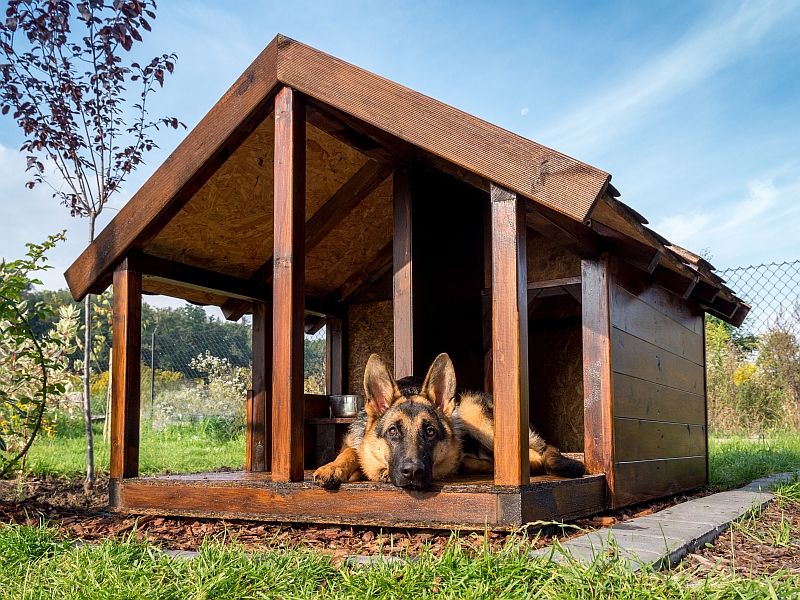Many dogs spend most of their time indoors with their human(s); however, if a dog is being kept outdoor, or spends a significant amount of time there, he should have a suitable dog house for protection from the elements, and privacy.
When faced with the decision of picking a dog house, there are many considerations that need to be made in order to pick the proper dog house for your specific dog breed and living situation.
Dog House Material
The first decision that needs to be made is the material by which your dog house is constructed. There are three basic types of material to choose from: plastic, wood, or metal.
Plastic dog houses are light (easy to transport), easier to clean, don’t have nooks and crannies in which ticks and fleas can hide and build nests, less expensive, and don’t develop splinters which can prick your pooch. Plastic dog houses also require very little maintenance, which is basically keeping it clean by washing or wiping it as necessary.
Metal dog houses are usually just used for transportation, and are generally referred to as dog boxes, and are smaller than plastic or wooden kinds.
Wooden dog houses are the best protection against the elements (both hot and cold weather), keeping your dog cool in the summer, and warm in the winter. Aesthetically, wooden dog houses are much more pleasing to the eye as compared to the plastic or metal kind. Dog houses made of wood will pose a problem with nesting fleas and ticks, but this can be mitigated by using cedar wood or cedar wood chips, shavings as the bedding for the dog house.
Dog House Size
The size of the dog house is mostly dictated by the size of the dog that is going to be using it. The basic (and important) things to keep in mind are:
- The dog house should be large enough so that your dog can comfortably turn around once inside, and be able to lie down comfortably even when fully stretched out.
- Getting a dog house that is larger than the above recommendation will have drawbacks in that it will be more difficult to keep warm. Additionally, dogs enjoy and feel more secure in spaces that are cozy.
- The entrance of the dog house should be slightly taller than the height of your dog at the withers, and slightly wider than the widest point on your dog (e.g. the chest). Ideally, the location of the entrance should be off-center to provide better protection from the elements, and better privacy.
If you are buying a dog house for a puppy, and don’t want to replace the house when the puppy is fully grown, then do some research and find out what is the average size of a fully grown dog of that breed, and get a dog house according to that size.
Other Considerations
- Raised floors: If possible, get a dog house that is elevated a few inches off of the ground, and has insulation. This will provide adequate protection from the elements, and will minimize rotting if you have a wooden dog house.
- Bedding: The ideal bedding for a dog house is cedar wood shavings, which helps repel fleas and ticks. Avoid using blankets and material not specifically designed for dog house insulation.
- Porch or awning: A porch or awning provides additional protection form the elements, keeping the sun and precipitation away from the interior of the dog house, and also provide a nice shaded place for your pooch to hang out.
- Ventilation: It is helpful to have ventilation (other than the entrance) in order to help hot weather temperatures in the dog house, and the moisture level during winters. This can be accomplished by having a few small holes on the side of the dog house (ideally across form the entrance) to provide proper ventilation.
- Heating: If you live in a cold environment, then heating the dog house is usually recommended in order to keep your pooch comfortable, especially if your dog is old, not fully healthy, or is a warm-weather breed. Your options include standalone heating units, heated mats, or lightbulb heating.

